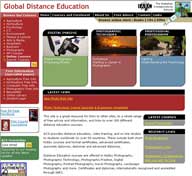
Learn to create web pages
Explore different methods of laying out an HTML page. Investigate some of the techniques employed by web developers to Navigate between web pages. Experiment with the use of images and background images on web pages. Use style sheets to change the look and feel of a web page. Build a web site based on a client design specification.